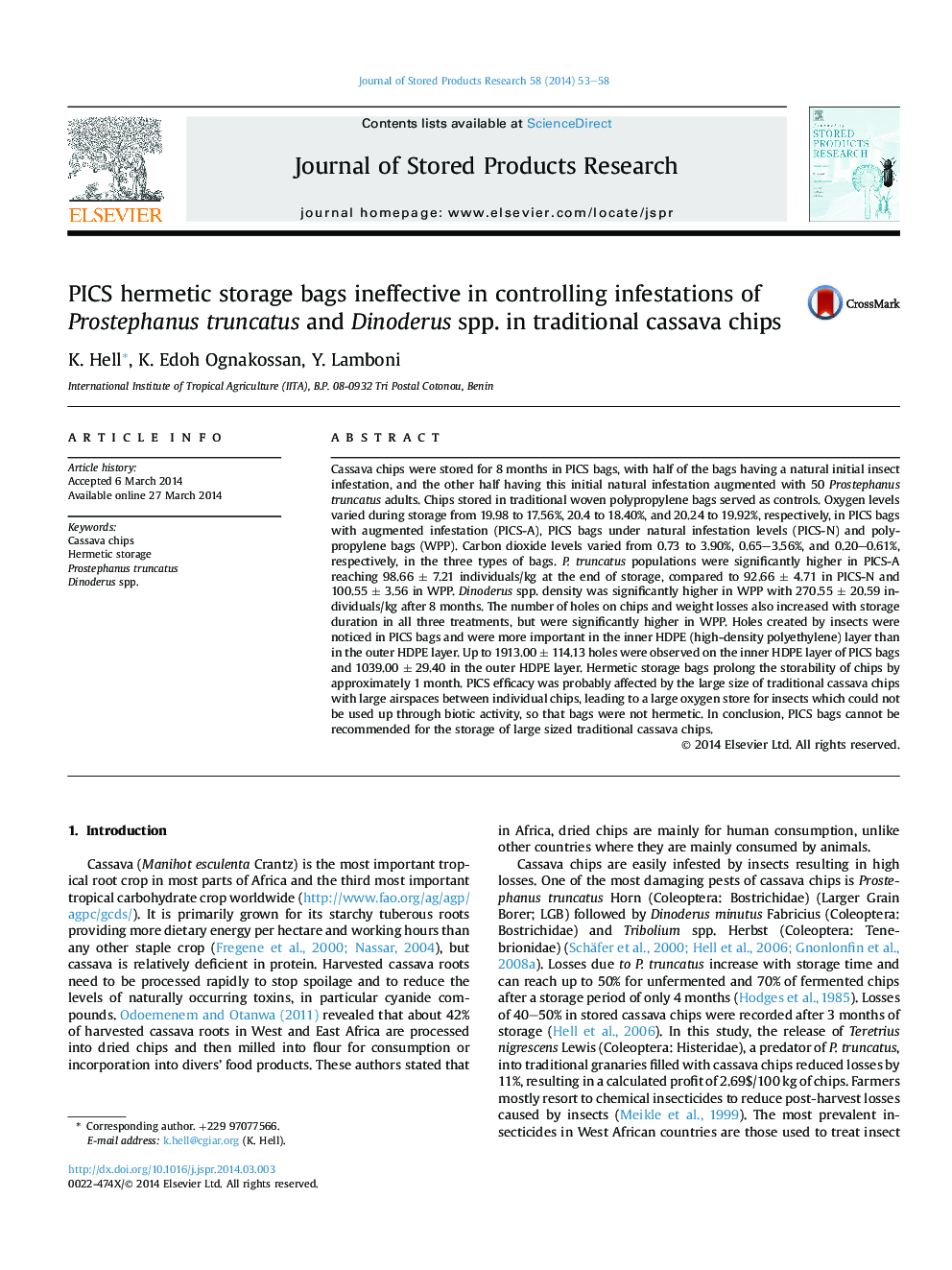| Article ID | Journal | Published Year | Pages | File Type |
|---|---|---|---|---|
| 4517069 | Journal of Stored Products Research | 2014 | 6 Pages |
•Storage of conventional farmer cassava chips in PICS Bags was only successful till 4 months not beyond.•Losses in PICS bags exceeded 8% after 6 months of storage.•PICS bags prolong only the storability of chips by approximately 1 month.•Chips size did not allowed O2 reduction in PICS bags leading to hermetic conditions.
Cassava chips were stored for 8 months in PICS bags, with half of the bags having a natural initial insect infestation, and the other half having this initial natural infestation augmented with 50 Prostephanus truncatus adults. Chips stored in traditional woven polypropylene bags served as controls. Oxygen levels varied during storage from 19.98 to 17.56%, 20.4 to 18.40%, and 20.24 to 19.92%, respectively, in PICS bags with augmented infestation (PICS-A), PICS bags under natural infestation levels (PICS-N) and polypropylene bags (WPP). Carbon dioxide levels varied from 0.73 to 3.90%, 0.65–3.56%, and 0.20–0.61%, respectively, in the three types of bags. P. truncatus populations were significantly higher in PICS-A reaching 98.66 ± 7.21 individuals/kg at the end of storage, compared to 92.66 ± 4.71 in PICS-N and 100.55 ± 3.56 in WPP. Dinoderus spp. density was significantly higher in WPP with 270.55 ± 20.59 individuals/kg after 8 months. The number of holes on chips and weight losses also increased with storage duration in all three treatments, but were significantly higher in WPP. Holes created by insects were noticed in PICS bags and were more important in the inner HDPE (high-density polyethylene) layer than in the outer HDPE layer. Up to 1913.00 ± 114.13 holes were observed on the inner HDPE layer of PICS bags and 1039.00 ± 29.40 in the outer HDPE layer. Hermetic storage bags prolong the storability of chips by approximately 1 month. PICS efficacy was probably affected by the large size of traditional cassava chips with large airspaces between individual chips, leading to a large oxygen store for insects which could not be used up through biotic activity, so that bags were not hermetic. In conclusion, PICS bags cannot be recommended for the storage of large sized traditional cassava chips.
